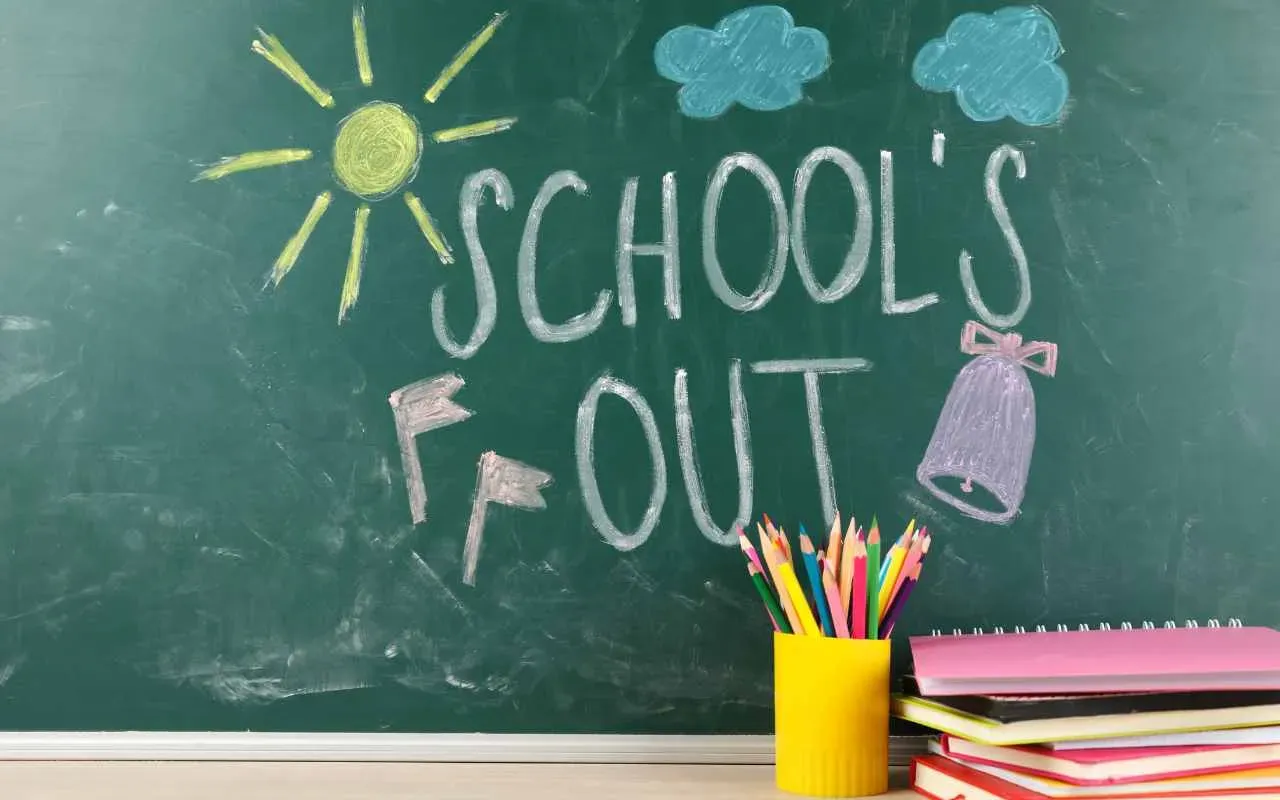How Long Is Summer Break in 2025?
When the final school bell rings, marking the end of another academic year, students across the globe rejoice. This moment signals the start of summer break - a much-anticipated period of freedom from school responsibilities. But what exactly is summer break, and why do we have it?
In essence, summer break is a significant pause in the academic calendar that allows students to rest, recharge, and pursue other interests outside of their school curriculum. It not only provides an opportunity for relaxation but also serves as a vital time for students to explore new hobbies, learn practical skills, or even engage in part-time work.
However, while this tradition is widespread, the duration of summer break can greatly vary from country to country. Some nations enjoy an extended period of leisure lasting several months, while others take a comparatively shorter respite. This variability is influenced by a myriad of factors, including cultural practices, climate conditions, and education policies.
So, let’s delve deeper into this topic and find out more about how long summer break really lasts around the world!
Sign up for a free applicant profile on Bold.org and begin saving for college so you can enjoy summer without financial burden!

A Brief History of Summer Breaks
The idea of scheduled school breaks has its roots in societal changes and educational reforms. The school calendar we have today, with its long summer break, developed from practices that go back to the agrarian calendar. In the past, many children in rural areas took time off from school to help with farming, especially during planting and harvest times.
During the 19th century, movements to reform schools played a crucial role in shaping the school year we know today. At first, schools in cities operated all year round. But, this schedule turned out to be too demanding for both students and teachers. Reformers argued that breaks were necessary for rest and recovery, which led to the adoption of more structured academic years with scheduled breaks.
Apply for summer scholarships today to get the most out of your vacation!
Here are some key factors that influenced the development of school breaks:
- Agrarian Calendar Influence: Early school calendars were heavily influenced by the need for children to assist with family farms during busy agricultural periods. They would study for two-thirds of the year and then take a third off to aid with the harvest.
- Health Concerns: The belief that students and teachers needed time off for health reasons became a driving force behind establishing breaks in urban schools.
Get Matched to Thousands of Scholarships
Create your Bold.org profile to access thousands of exclusive scholarships, available only on Bold.org.
Create Free ProfileAs compulsory education laws were introduced, it became mandatory for all children below a certain age to attend school. This required a more standardized approach to scheduling across different regions and types of schools, especially within public schools.
Two significant factors outside of education also contributed to the concept of summer break:
- Standardization: With compulsory education becoming widespread, there was a need for a standardized school calendar that could be followed by everyone.
- Industrial Revolution: As society moved from agriculture to industry, it made sense to have longer breaks during the hottest part of the year when there was no widespread air conditioning. Climate change has only further made these differences in the seasons more extreme.
The length of summer break for most schools has changed over time due to various educational reforms aimed at finding a balance between teaching needs and societal changes. Some reforms have resulted in longer summers for kids, while others have proposed shorter breaks to maintain learning continuity.
- Advocates for a shorter summer break argue that long breaks disrupt learning progress.
- Proponents of longer summers believe they provide valuable downtime.
Understanding the historical context helps us see how current summer and late spring break practices developed. It also highlights the importance of adapting educational systems as society changes and technology advances. Looking at vacation lengths in different countries can further our understanding of how cultural and seasonal factors shape school calendars worldwide.
Create Your Free Profile to Apply for Summer Scholarships Today!
Differences Between High School and College Summer Breaks
While the concept of summer break is common to both high school and college, the structure, duration, and implications of these breaks can vary significantly.
High School Summer Breaks
In high schools, summer holidays are often quite structured, typically starting in late May or early June and ending in late August or early September. This time frame, about three months, is relatively standard across many schools, as it aligns with the K-12 academic calendar.
The purpose of this extended break is multifaceted - it serves as a respite from academic rigor, offers students time for recreation, family trips, part-time jobs, and summer school.
Start saving up for college with our scholarships for high school students!
College Summer Breaks
College summer breaks, on the other hand, can be more variable and influenced by the specific institution’s academic calendar. Some colleges operate on a semester system with a long summer break, similar to high school. The summer holiday can range from six weeks to three months.
Schools tend to end around late May or early June and start up again as late as mid September. Meanwhile, other colleges use a quarter or trimester system which might result in shorter but more frequent breaks throughout the year. These colleges may end in late June then start up again in early fall, but have two weeks for fall or spring breaks.
Moreover, college students often utilize their summer differently. For many, it’s an opportunity to gain practical experience relevant to their field of study through internships or research projects. Others might enroll in summer classes to earn additional credits or accelerate their degree progress.
Ultimately, while both high school and college students savor the freedom associated with summer breaks, the latter often involves a greater level of autonomy and a greater sense of responsibility aligned with adulthood’s impending arrival.
Do you want to do something productive during your summer break? Begin reducing student debt with our scholarships for college undergrads!

How Long is Summer Break in Different Countries?
While students in the United States often enjoy a U.S. summer break duration of about 10 to 12 weeks, countries’ summer break duration can vary greatly due to cultural norms and environmental factors.
United States
- Typically runs from early June to late August
- Duration: Approximately 10-12 weeks
United Kingdom
- Summer break starts in late July
- Return in early September
- Duration: 6 weeks
Japan
- Starts from late July
- Concludes in early September
- Duration: 6 weeks
Australia
- Main summer holiday coincides with Christmas and New Year festivities as it’s in the Southern Hemisphere
- Starts in mid-December and ends in late January or early February
- Duration: 6 weeks
Italy
- Begins in early June
- Ends in September
- Duration: Around 3 months
Looking for an easy way to reduce college costs? Check out our scholarships, some of which require no essay or are tailored specifically towards your interests!

The influence of cultural and seasonal factors plays a pivotal role in determining the length of school holidays by country. For instance, the tradition of a long summer break in the United States has roots in an agrarian calendar that is no longer relevant but persists due to cultural inertia. In contrast, other countries like Japan have shorter summer holidays that reflect their educational system’s emphasis on discipline and continuous study.
In Australia, the extended break over December and January allows families to celebrate major holidays and make the most of their summer season during this period. Conversely, Italy’s lengthy three-month summer break aligns with its cultural emphasis on family time and relaxation during the hottest part of the year.
These variations highlight how each country’s approach to education and work-life balance influences their school calendars. The diversity across global education systems offers a glimpse into how different societies prioritize learning and leisure.
If you’re an international student, college expenses in the U.S. can seem exorbitant. Start reducing costs with our scholarships for international students!
The Impact of Extended Summer Breaks on Students’ Learning
Extended summer breaks bring a mix of joy and potential challenges for students. On the one hand, they offer a much-needed break from school. On the other hand, they can lead to summer learning loss, which is when students forget some of what they learned during the school year.
Summer learning loss, also known as summer slide, happens because students aren’t practicing their skills or using their knowledge while they’re away from school. Research shows that this can especially affect students from lower-income families, who may lose up to two months’ worth of reading skills over a very long summer vacation. Math skills can also suffer during this time.
Strategies to Reduce Summer Learning Loss
It’s important to address this issue of summer learning loss so that students can continue making progress in their education. Here are some strategies that have been found effective in preventing summer learning loss:
- Structured Learning Activities: Encourage students to participate in educational programs, camps, or even summer school.
- Reading Habits: Foster a love for reading by providing access to books and encouraging regular reading.
- Access to Resources: Make sure students have access to books and educational materials during the summer break.
- Find Seasonal Work: While working a job is not exactly the same as being in school, it can often enhance skills like critical thinking, communication, and organization that will greatly benefit the student during the academic year.
These strategies can help keep students’ minds active and prevent them from losing valuable knowledge and skills over the long summer breaks.
The impact of extended summer breaks on students’ learning varies depending on factors like socioeconomic status and access to resources. Students from disadvantaged backgrounds may face greater challenges in maintaining their academic progress during this time. Their higher-income peers may enjoy greater resources to maintain the knowledge gained during school time.
To address these disparities, community-based solutions such as free summer programs can play a crucial role in providing support and resources to those who need them most. Some educators favor year-long education, but it’s important to weigh the costs and benefits of a school year without an extended break for recuperation.
Students will typically apply for scholarships in the summer of the previous year. Get ahead of looming debt with our guide on how scholarships work!

Pros and Cons of a Lengthy Summer Vacation Period
The debate on the length of summer vacation often revolves around the benefits of summer break and the challenges of summer break. Each angle provides critical insights into how extended breaks from school impact students and their families.
Benefits for Students and Families
- Rest and Rejuvenation: A long summer break gives students ample time to recharge after an intense academic year, which is essential for mental and physical health. It’s a period where the pressures of homework, exams, and strict schedules are lifted, allowing for relaxation and recovery.
- Family Bonding: Summer vacations offer a unique opportunity for quality family time. Families can travel together, engage in activities that they don’t usually have time for during the school year, or simply enjoy each other’s company without the interruption of school-related commitments.
- Personal Development: Without the constraints of a structured academic schedule, students can explore personal interests more deeply. This could be through hobbies, part-time jobs, or volunteer work that fosters independence and practical life skills.
- Educational Exploration: The break from formal education allows students to learn in different environments and through varied experiences. Whether it’s through travel, museums, camps, or workshops, these experiences can complement traditional learning.
Potential Drawbacks
- Summer Learning Loss: While shortening summer break can reduce the effects of summer slides, without daily or even weekly stimulation, students may start to forget content that they spent months learning during the school year.
- Routine Disruption: Regular school routines provide a structure that benefits many students. A lengthy break can disrupt this routine, potentially leading to difficulties in re-adjusting once school resumes.
- Economic Strain: For some families, the cost associated with extra childcare or engaging children in summer programs may lead to financial strain.
The balance between the advantages and potential disadvantages of long summer vacations is delicate. What works best for one student or family might not be ideal for another. Identifying strategies that maximize benefits while mitigating drawbacks is crucial.
Promoting Learning and Engagement During the Summer Months
Summer months, often seen as a break from learning, can actually be a great time for educational opportunities. The key is to find ways to learn while still enjoying free time. Why waste the chance to keep our brains active and growing?
The Power of Reading
One effective way to encourage continuous education is through reading. Books can take us to new places, teach us new things, and keep our minds sharp. They are the perfect companions for summer vacations.
Consider these ideas for a summer reading program:
- Offer a variety of books in different genres: fiction, non-fiction, science fiction, graphic novels, and more.
- Choose books that cater to different interests and age groups.
- Provide incentives or rewards for reaching reading goals.
Remember, the goal is not just to finish books but also to develop a love for reading.
"The more that you read, the more things you will know. The more that you learn, the more places you'll go." - Dr. Seuss
Summer School
An obvious way to promote learning during the summer is through summer school. These are courses offered by universities or local high schools to supplement a normal academic school year. The classes during summer school tend to be fewer but more condensed, often trying to teach a year’s worth of content in just six weeks.
While summer school may defeat the purpose of a summer break, there are ways to balance a continued summer education with the relaxation every student deserves during these summer holidays.
- Plan well and prioritize. Summer school is similar to regular school in that there are homework assignments and tests to study and prepare for. Just because it is mid July or mid June, does not mean that the homework will write itself.
- Work ahead. You’ll have more time during the summer because of a decreased work load, so capitalize upon it!
- Remind yourself of the long-run benefits. Taking a summer course or multiple courses means that you can tackle requirements early on. This can lead to graduating early or having more academic freedom before graduation.
Embracing Learning as a Lifestyle
Ultimately, promoting learning during the summer is about fostering a mindset of continuous growth and curiosity. It’s about recognizing that learning can happen anywhere, at any time.
"Education is not preparation for life; education is life itself." - John Dewey
So, make the most of this summer and embrace learning as a lifestyle. Every moment of engagement counts towards a brighter future.

Frequently Asked Questions About How Long Is Summer Break
Which American university has the longest summer break?
Dartmouth College often leads with one of the lengthiest summer breaks among American universities, spanning from early June to late September due to its unique quarter system.
Are there any variations in the duration of summer break for different school districts?
Absolutely. The duration of summer break can vary among different school districts based on their academic calendars and local policies. Some districts may have longer summer breaks, typically lasting around two to three months, while others might opt for shorter breaks of six to eight weeks.
These variations often depend on factors such as the number of instructional days required by state regulations, regional climate considerations, and scheduling preferences of the school board.
Do students and teachers have the same length of summer break?
Typically, students and teachers share the same summer break schedule. However, teachers may have additional days before and after the official vacation period for professional development or classroom preparation.
Here at Bold.org, we’re committed to supporting high school and college students as they navigate the complexities of pursuing quality education. Don’t forget to browse through our blog, written for and by students, where we provide quality answers to all your burning questions.

About Bold.org Editorial Team
Our dedicated Editorial Team is passionate about empowering students on their academic journey by providing valuable insights into scholarships, student loans, finances, and college life. We believe in the influential power of education and strive to make the path to success a bit smoother for every student. College is more than just classes and exams; it's a transformative experience. Our articles explore various aspects of college life, from choosing the right major to balancing academics and extracurricular activities. Our objective is to help students and graduates receive more information about scholarships, grants, and all sorts of financial aid.
Our team is made up of expert college students and graduates with personal experience funding their education, using a voice catered to students to provide informational content through accessible means. With this student-centric voice, the team is able to serve a wide range of audiences, from high school users and college students to adult learners and graduates looking to pay off student loans.
Here at Bold.org, we work with expert Content Writers and Editors to create the most compelling and informative blog articles. The content found on Bold.org is original and published after an extensive research process. With our commitment to providing accurate, timely, and relevant information, we aim to be your go-to resource for all your academic and financial needs.